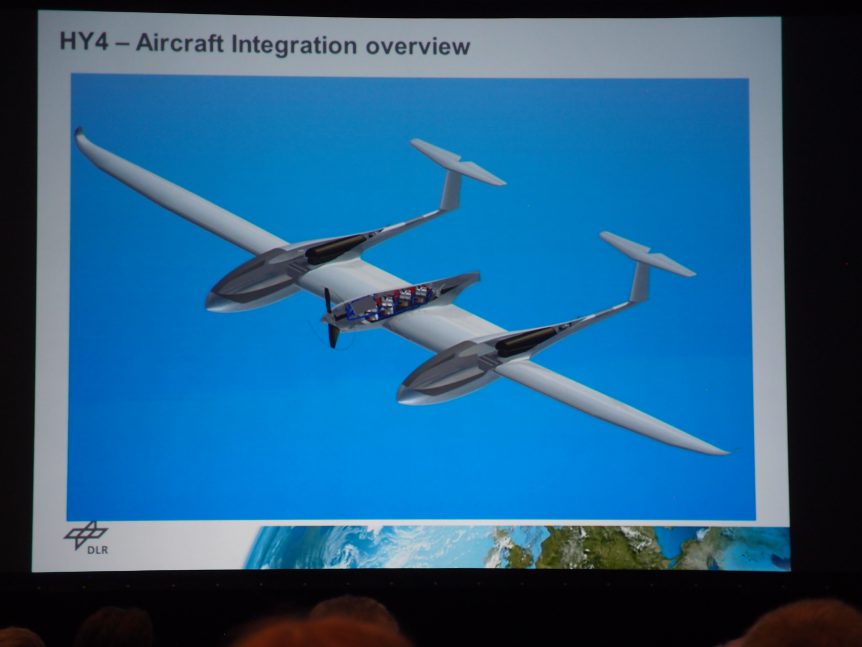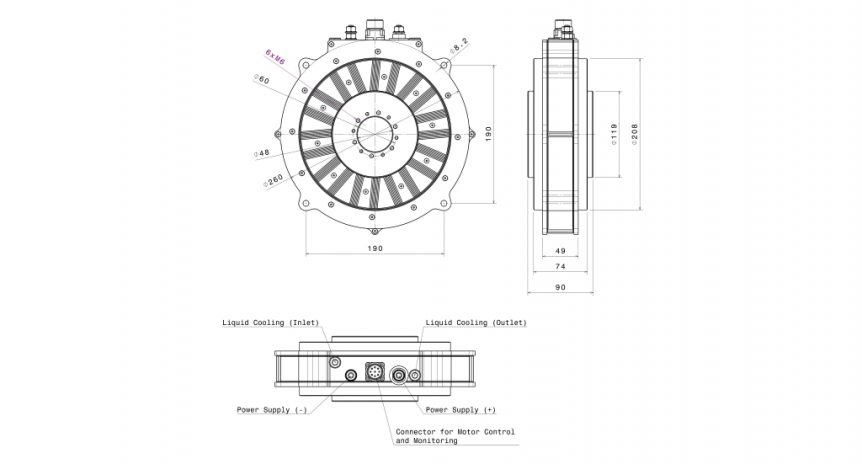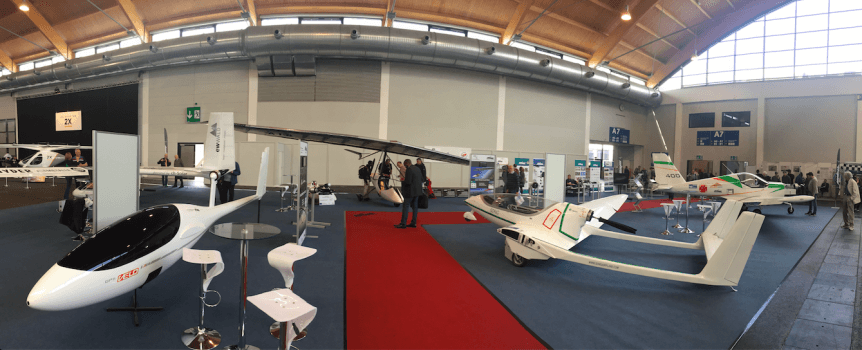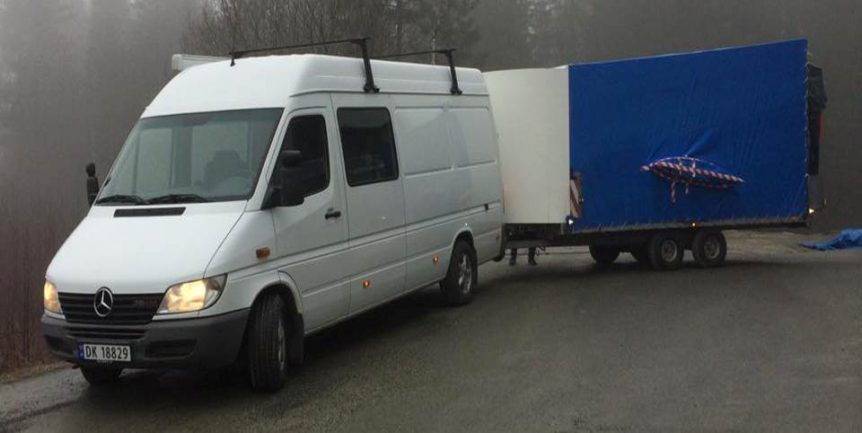I’m writing this in the first person, rather than the usual third-person voice that allows me to remain objective about things on which I report. In this case, I have been the recipient of much joy over the last ten years from being an observer of the ongoing progress in electric aviation. Dr. Brien Seeley, founder of the Sustainable Aviation Foundation, asked me to begin writing a blog about electric aviation in 2009. One of my original postings concerned a Kitplanes Magazine contributor, David Ullman – who was this year’s Sustainable Aviation Symposium’s keynote speaker. In 2009, he predicted a great future for electric aviation – most of which has come to pass, and some of which he is creating in his hangar with his fully-instrumented wind tunnel and ambitious blown-wing design. He proposes something called USTOL, Ultimate Short Takeoff and Landing, aircraft that will use a dynamic relationship between their power and lift systems. His vehicle for demonstrating this …
Qinetix Motor at E-Flight Expo
QinetiX GmbH in Germany manufactures a motor and controller combined in one case to lower weight and simplify installation. Their QPD-40, shown at the Aero Friedrichshafen E-Flight Expo and on their web page, seems to exemplify those goals. Its 12 kilogram (26.4 pound) weight and 40 kilowatt (53.6 hp.) output gives it a power-to-weight ratio of 3.2 kilowatts per kilogram (2 horsepower per pound). Running on 60 Volts at a maximum 680 Amperes, the motor produces 212 Newton-meters (156.4 foot-pounds) of torque, swinging a propeller at only 1,800 rpm, allowing for quiet operation. The liquid-cooled stator and power electronics will require some form of heat exchanger, but probably with fairly low cooling drag overall. Only 90 millimeters (3.54 inches) thick and around a foot in diameter, the motor should fit neatly into streamlined propeller spinners. Other uses in automobiles and wind turbines present hopeful potential applications for this neatly-packaged motor.
Five Representative Exhibitors at the E-Flight Expo
Aero, an annual event at Friedrichshafen, Germany, highlights the beginning of the European air show season. E-Flight Expo has been a regular part of this for the last several years, and displays the latest in electric flight technology. Certainly the most forward-looking part of the show, the Expo grows every year. Several exhibitors helped further the advanced look this year. MGM Compro With at least five aircraft powered by their electric power systems on display, MGM Compro showed great market strength. The Czech firm has 16 of its motors atop each Volocopter 200, with one as a propulsor in the tail. Their motors power the Magnus e-Fusion aerobatic trainer, several GP gliders, the S.R.O. Song motorglider, and any number of hang gliders and paramotors. Votec Evolaris Two former students of the Bern University of Applied Sciences, Patrick Wälti and Steven Dünki, manage the Evolaris project, with an aerobatic craft as their ultimate output. They’ve designed and built their own 200 …
Equator P2 Runs Forwards, Backwards and Heads Toward Friedrichshafen
Tomas Broedreskift, on his Equator Facebook page, reports, “Successful motor test with propeller mounted today with #engiro! Celebrating the milestone with some German (beer glass emoticon) this evening! (noise maker emoticons) Amazing to see the thing come alive at last.” As the video shows, the Equator P2’s motor can be made to run in reverse, useful for backing out of moorages or avoiding river debris when the amphibian settles on the water. Engiro makes range extenders on a custom basis for a variety of applications including (surprise!) amphibious aircraft. The Equator P2’s first long-distance trip, 1,361 kilometers (843 miles) from Norway to Aachen, Germany was obviously not by air, but by hand-crafted trailer, to Engiro’s headquarters where the motor tests took place. Following those tests, the hardy team will trek another 600 kilometers (373 miles) to Friedrichshafen, where the P2 will hold a place of honor at Aero17’s E-Flight Expo. Doubtless, attendees at Aero who find Hall 7 and booth …
e-Genius Extends Its Range
Shown at the E-Flight Expo at Friedrichshafen’s Aero 2015, Stuttgart University’s e-Genius had an aerodynamic-looking pod next to one wing, containing an ENGIRO range extender consisting of a Wankel-type engine and a generator. The unit could, as its name implies, help e-Genius go for new records to add to its already significant collection. Bill Lofton at EV Hangar has detailed the extender, now associated with the e-Genius and in a larger variant on the Equator P2 amphibian being built in Norway by Tomas Broedreskift. Equator’s web site describes its power system: “The hybrid propulsion system being developed by Equator is called EHPS (Equator Hybrid Propulsion System). The engine specific project is being co-funded by Transnova and the company doing the development work with us on this is ENGIRO. We will design a custom engine and generator specified specifically for the P2. Power out in the prop is 100kW (approx. 130HP) and the generator will produce 57-60kW of power charging the batteries. The combustion …
WattsUp Becomes Alpha Electro – Training Market Warms Up
With today’s AVWeb report from Mary Grady at Aero in Friedrichshafen, Germany, the wraps are off the commercial reality that Pipistrel is ready to market its Alpha Electro, a new airplane for the training market. The production version of the former WattsUp, the airplane’s primary mission is to provide training in the pattern for aspiring pilots. Details abound in the video, with Tine Tomazic, Chief Engineer for the Slovenian firm, showing Mary the features of the craft. One of the best features may be its 100,000 euro price tag, well under pricing for many conventionally-powered light sport aircraft that would compete in the trainer market. Since Aero brings in exhibitors from all over the world and incorporates an E-Flight Expo, one can expect to see the latest developments in electric flight there, all displayed under the motto, “Electrical, Ecological, Evolutionary.“ The Chinese RX1E from Liaoning General Aviation Academy, similar in configuration and slightly lagging in performance to the Electro, is …
PC-Aero’s Elektra One
Dipl. Ing. Calin Gologan, an exhibitor and presenter at this year’s E-Flight Expo at Friedrichshafen, will be at the fourth annual Electric Aircraft Symposium, discussing the design and technology he hopes will imbue the winning entry in next year’s Green Flight Challenge. He notes that the GFC, “the world’s largest prize…awarded in general aviation,” was a major incentive in his pressing forward with an environmentally conscientious design. His Elektra One is part his PC-Aero’s ambitious campaign to fly three different electric aircraft in the next few years, the single-seat “One,” two-seat “Two,”, and most ambitiously, a four-seat “Four.” With at least the shell of Elektra One at the Expo, Gologan is making good progress toward completion of his GFC machine, the prototype for the first of a line of production aircraft. Gologan’s goals are enunciated in his PC-Aero web site. “The Elektra One is environmentally friendly, because it flies without CO2 emissions. It is light and has a high end aerodynamics. Integrated are …
Gérard Thevenot Wins E-Flight Award at AERO 2010
With over 30 electrical flight exhibitors at Friedrichshafen, Germany’s Aero 2010 International Exposition for General Aviation, selection of this year’s E-Flight Award winner must have been particularly difficult. The”E”of the E-Flight portion of the huge show represents, “Electrical, Ecological and Evolutionary.” Thevenot’s machine is all those. Gérard Thevenot flew his hydrogen-powered ultralight “trike” across the English Channel in July, 2009 (“Man of La Manche”, October 29, 2009), with a Geiger/Eck HP-10 electric motor powered by a hydrogen fuel cell, “without the onboard presence of an accumulator or battery.” Showing his 55 kilogram (121 pounds), seven kilowatt (11 horsepower), 12 meter (37 feet) span ultralight at last year’s Expo, he went on to demonstrate its capabilities in the following months. Its light weight allows a consumption of only 550 grams per flight hour, and the craft’s 5-liter tank allows about one hour flying time. In an environmentally friendly hint of its passing, the craft leaves behind only a mist of water …




